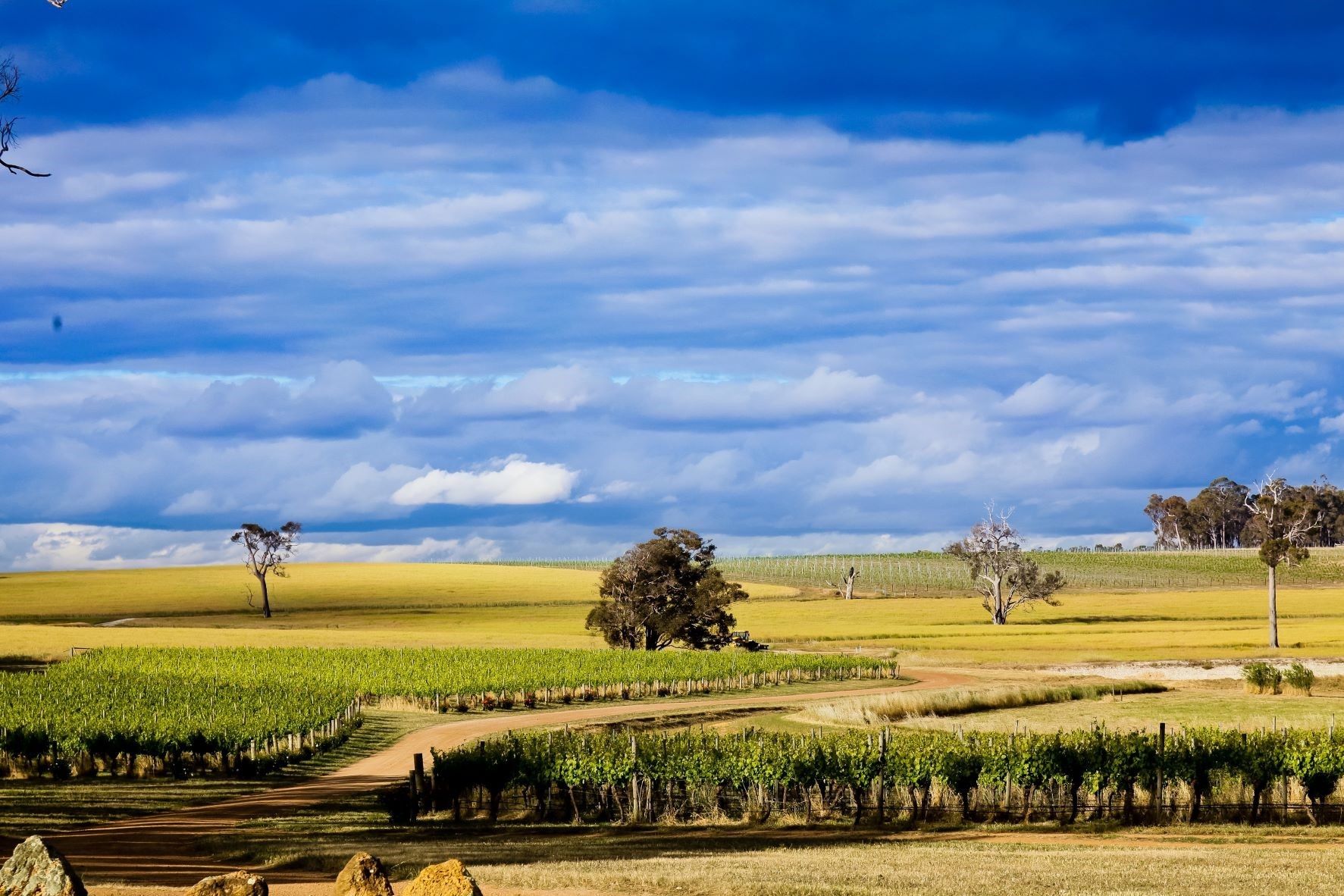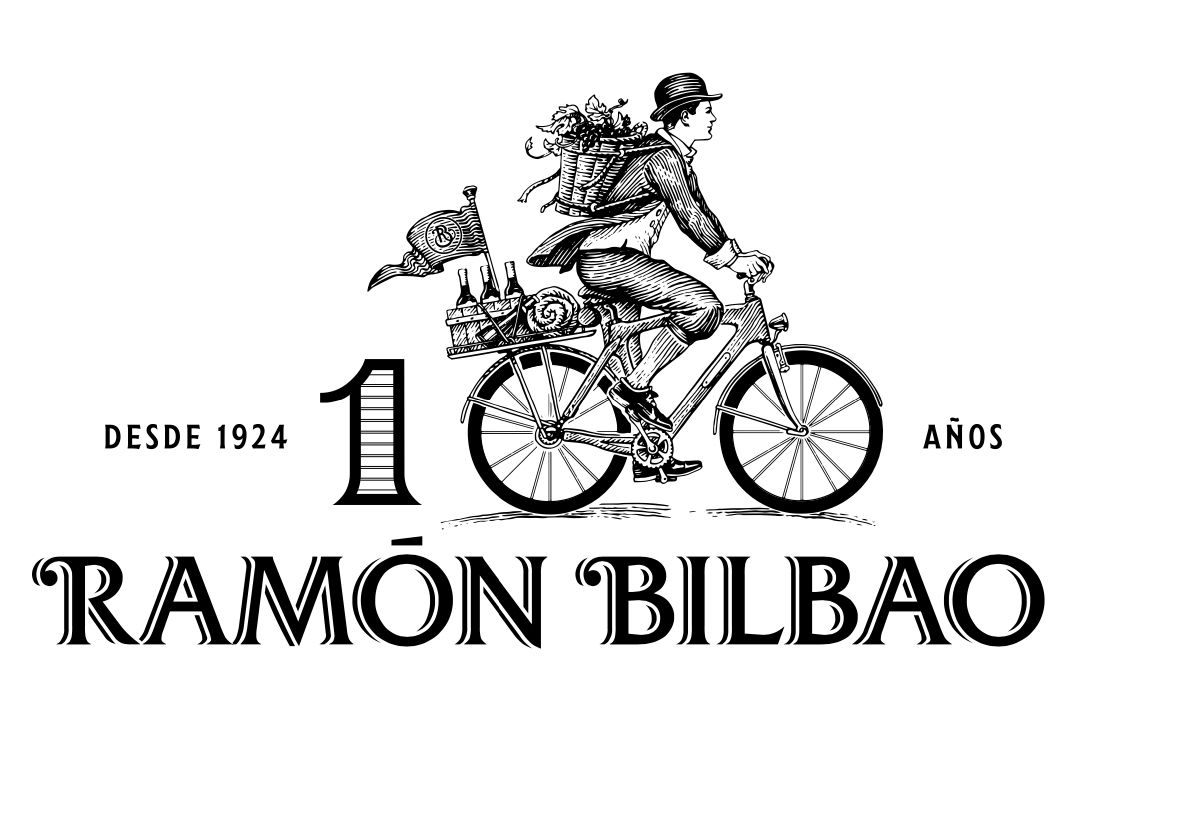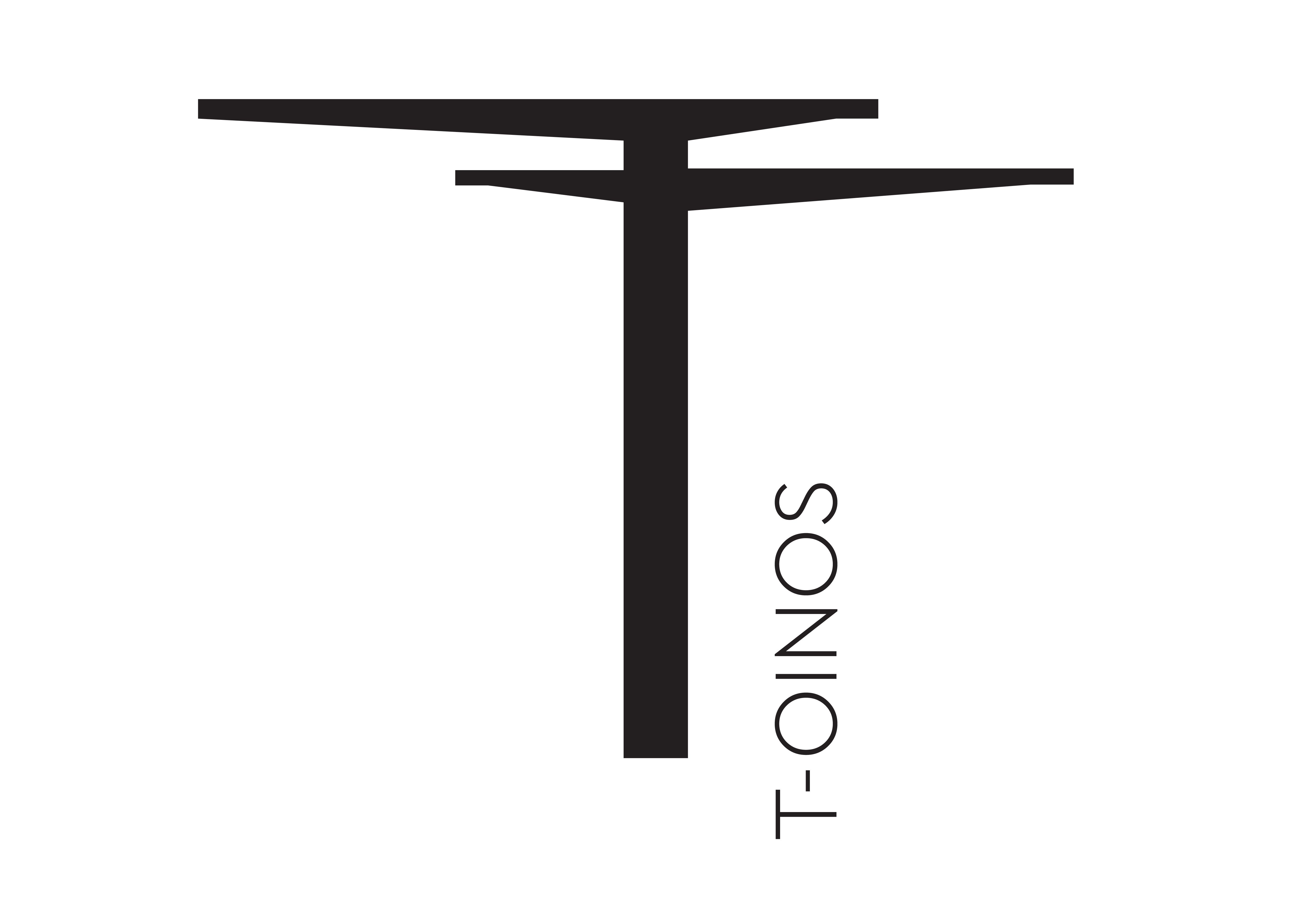Whisper it gently but Riesling is making a home and reputation amongst the winemaking community of Western Australia, says David Stredwick.
Australia’s most expansive wine region keeps its charms well-hidden. Driving into the Great Southern along Muir Highway from the west, forests shroud the road, gradually giving way to large paddocks dotted with livestock. The hamlet of Rocky Gully comes and goes, only hinting at the vinous opportunities lying to the north in Frankland River.
Dense trees reassert themselves in the locality of Forest Hill, then finally, Mount Barker nears. Around each corner, rows of vines straddle gentle slopes, throwing glimpses of sheds and cellar doors; a trove of excitement for the wine traveller.
For lovers of Riesling, a variety that Howard Park’s winemaker Nic Bowen refers to as, “the poetry of terroir,” the sub-regions and special sites of the Great Southern can be paradise found, and it’s well-worth making the time to look. Visiting in-person affirms the terms ‘vastness’ and ‘seclusion’ that adorn back labels of many bottles. Being here evokes a visceral sense of the challenges faced, and rewards well-earned by the persistent families who pursued the dream of making world-class wines at the end of the earth.
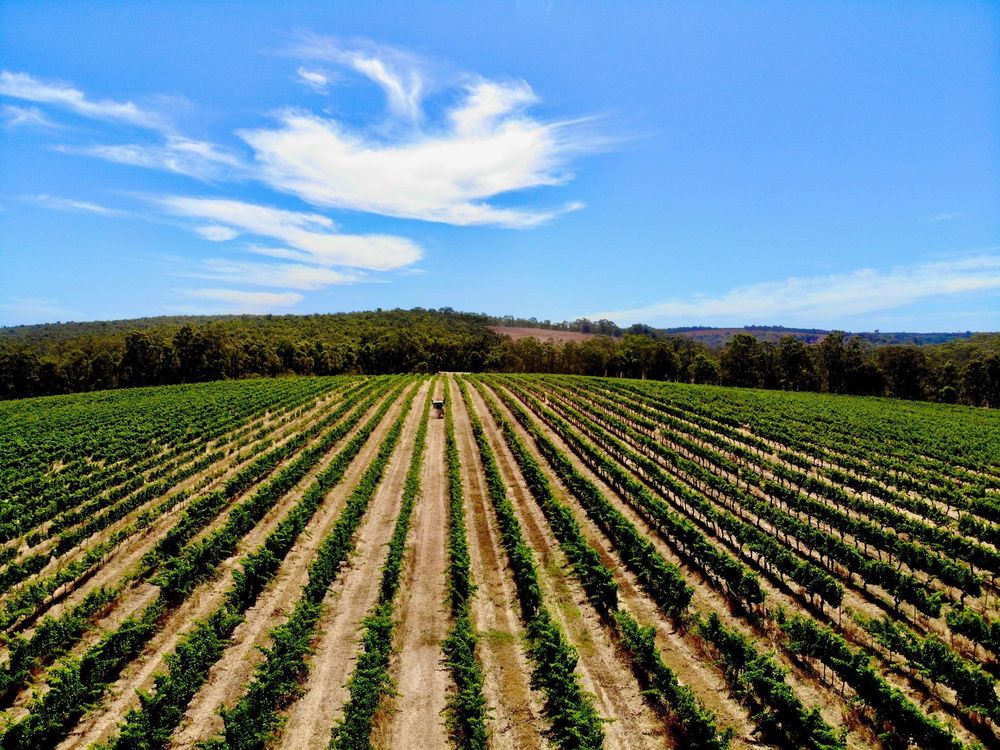
Great Southern vineyards in Western Australia
It is not surprising that Riesling was one of the inaugural varieties when the Great Southern emerged as a speculative cool-climate wine region in 1965. At that time, “Rhine Riesling” was a ubiquitous offering from merchants, so commercial viability was promising, and material for planting available.
The suitability of the area had been championed by famed Western Australian viticulturist Bill Jamieson, and 10 years earlier the State Government sought positive reinforcement from venerated Professor Harold Olmo, who travelled from University of California, Davis to discover and declare echoes of Bordeaux in the gravel and laterite loams of Mount Barker.
Astonishing versatility was uncovered as vineyards expanded into neighbouring towns, and this allowed the signature grapes of Mosel, Burgundy and the Rhone to also flourish in the ground, and dazzle in the bottle.
Early adopters
Success was never guaranteed, and the early adopters faced dual obstacles of isolation and inexperience. Riesling provided much-needed validation, with offerings from foundation wineries Alkoomi and Plantagenet achieving exhibition success in Western Australia, before the 1975 vintage from Forest Hill, the first planted vineyard, blitzed the national show circuit, receiving nine trophies and 12 gold medals. The Great Southern was on the map and the allure of wine growing convinced local growers and graziers to diversify their interests. It also attracted aspirational outsiders.
Half a century later, mature vineyards and talented, experienced winemakers have taken the expression of Riesling to another level, where the region’s examples sit comfortably as world-class interpretations of the variety.
Rob Diletti – Castle Rock Estate
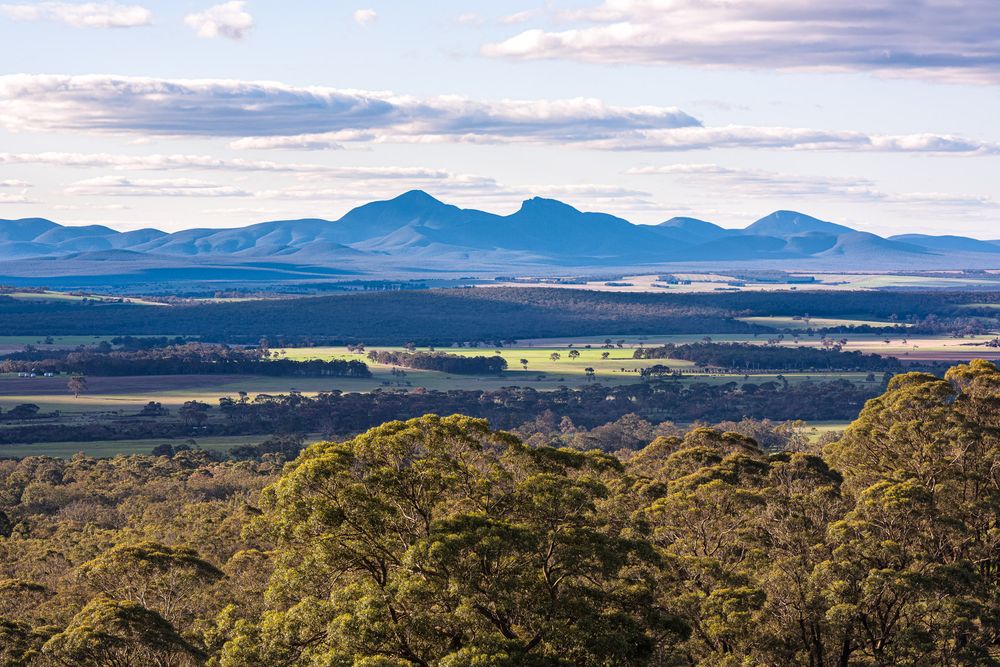
Castle Rock and the view out to the Stirling Ranges. Credit Great Southern Wine
Rob Diletti is one of those talented winemakers and his parents, Angelo and Wendy, the aspiring outsiders who planted vines in 1983 at what is now Castle Rock Estate. The steep incline to the famous granite outcrop nestled in the forest behind can’t be seen from the tasting room car park. On a clear day though you can take in the majesty of the south-west’s highest mountains, the Stirling Ranges. These opposing geological features speak to the complexity of environmental influences that shape the vineyards and give nuance to Great Southern Riesling.
Diletti’s wines are an exemplar of Porongurup, one of five sub-regions that were delineated to help classify the distinct winegrowing areas of this sprawling expanse. The sub-regions contrast in average annual rainfall, temperature ranges and vineyard elevations impacting on the flavour profiles, for instance, of coastal wines from Albany or Denmark as compared to those grown inland in Frankland River or Mount Barker.
The region’s common influences are equally important.The Southern Ocean’s influence is prolific, extending its reach to every vineyard in the Great Southern. At Castle Rock Estate, it wraps cool air around exposed Riesling blocks to preserve the pure acidity that makes the wines so compelling.
“Essentially, the [Great Australian] Bight starts east of Albany, so there is ocean only 40 kilometres to the east of the vineyard,” says Diletti. “This, coupled with our easterly aspect, elevation (300 metres) above the surrounding landscape and the prevailing easterly winds in summer, keeps our daytime temperatures relatively cool. We are also protected from the afternoon sun by the Porongurup Range.”
Many winemakers like to claim the most important part of making good Riesling is to stay out of the way, however, great wines don’t make themselves. Vineyards are nurtured through the climatic ebb and flow of each growing season, and the decision around when to harvest can be so crucial, that the availability of labour or machinery are important variables in wine quality.
Diletti purchased his own selective harvester to neutralise this uncertainty. His wines reflect this considered reach for perfection.
For the Estate Riesling, pristine fruit is carefully pressed, and the portion of free run juice conveyed to stainless steel tanks for a cool, controlled fermentation. A brief interaction with healthy, fine lees in tank brings energy and texture, and the wine is bottled less than three months after harvest.
An integrated core of brilliant acidity carries floral aromas and exquisite, rich lime juice flavours that are known as a Porongurup signature. The elemental layers coiled up within the young wine will quietly unfurl over decades, bearing witness to an essential character that binds up site, variety and maker, and speaks of Great Southern Riesling to anyone that wants to listen.
Brian Kent – Frankland Estate

The Frankland Estate is managed by winemaker Brian Kent
One hundred kilometres north-west at Frankland Estate, winemaker Brian Kent shares the same reverence for Riesling, but plays with a different palette. Planted in 1988 by his parents-in-law, Barrie Smith and Judi Cullam, on a plateau bordered by farmland and forest, their vineyard is most aptly named Isolation Ridge. The old vines respond to the rhythms of the Frankland River sub-region and its continental climate leanings.
Riesling has flourished here with careful nurturing and the Estate’s concerted effort to seek and achieve organic certification over a decade ago. Kent says converting to organics didn’t come easily but the effects on the vineyard have been profound.
“We’re getting better hang time as the vines are more responsive to the heat stresses we’re getting more often these days. [They are] not shutting down and then rushing to ripen, I think due to the retention of more soil moisture,” he says. “We’re achieving better fruit concentration, acidity and overall balance. The better acid retention is allowing us to push ripeness just that little bit higher which allows us to have the style we are looking for with more tropical fruit characters.”
Warmer days, cool nights and refreshing winds promote this immaculate ripeness in fruit, which is picked in several passes through the vines, when flavour and complexity coalesce. In the winery, a sense of competent curiosity pervades, with Kent admitting: “We had become a little bored with fermenting and maturing in the same way each year.”
A uniform row of tanks has been rearranged to accommodate smaller vessels which enable trial ferments. Trials include higher levels of skin contact and native yeasts from the vineyard.A trapdoor leads to a snug barrel room of 600 litre puncheons and foudres, nearly three times as large. Here,the alchemy between Riesling and old oak evolves; the influence of wood and oxygen bringing a unique freshness and texture to the young wine, that contrasts with the evolution in stainless steel.
Relentless attention to detail and the separation of these batches allows a bottling to be assembled that is more than the sum of its parts, and thoughtfully reflects the terroir of the site. Bright and bold fruit flavours edge confidently into exotic territory, and fringing accents of spice only amplify the purity and power of Frankland River Riesling.
More oak is on the way, as Kent and his family are inspired by a wide range of Old World styles. “For me personally it’s the polar opposite to what we are doing in tank. The oxidative process of time in barrel is rounding out the mid-palate, bringing a real interest back into Isolation Ridge Riesling,” he says. “It makes you think about the wine and brings some intangible factors, you almost want to smell the wine more than drink it, to ponder what is going on in there.”
Galvanised community
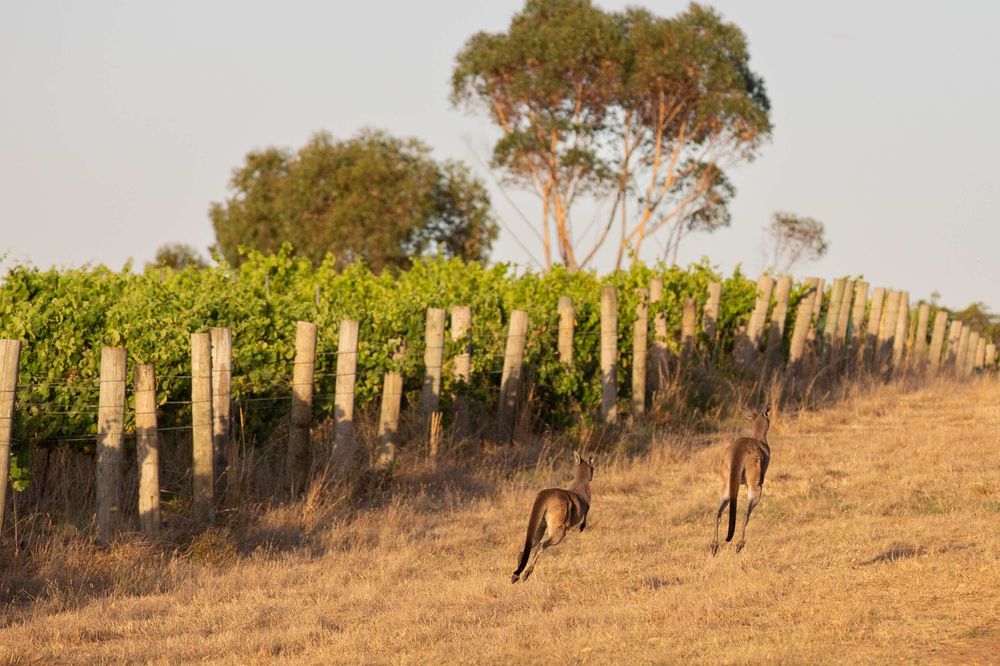
Mount Barrow vineyards. Credit: Jenny Feast Photography
The efforts of these two assured and dedicated vignerons offer a glimpse into the diversity of Great Southern Riesling and its exciting future. This community of growers and winemakers, galvanised by relative anonymity, is beginning to be freed from any dogmatic adherence to method or style which is allowing benchmark producers to shine, while also giving younger ‘garagistes’ the chance to experiment with small parcels from mature sites.
Recent revelations have been the otherworldly purity of wines like Duke’s Magpie Hill Reserve, anointed as Australia’s “Wine of the Year” in 2019 by the esteemed Halliday Wine Companion, and Wonderland Riesling, crafted by Brave New Wine, where native botanicals are infused in barrel for a truly idiosyncratic expression.
Drinkers looking for a comfort zone can speculate on comparisons to South Australia’s Clare Valley and Eden Valley, as well as the dry styles of Germany or Austria. But the distinct personalities of Great Southern wines as told through the sub-regions and single vineyards are what really makes them unique.Complete with prodigious ageing capacity, each vintage is not just a moment, but a legacy.
It is worth the effort to unearth these crystalline jewels from Western Australia’s deep south, that unlock new and different facets of the truly mesmerising grape variety that is Riesling.
- This article has been produced as part of the ‘New Voices’ wine content development program run by WA Wines to the World.
Wine Australia: Australia Trade Tasting, January 24

- You can taste many other examples of biodynamic and sustainable wines at Wine Australia’s Australia Trade Tasting in London on January 24 featuring more than 700 wines from 200 producers including 50 who are looking for distribution in the UK. Find out more and how to register here. For more information, please email uk@wineaustralia.com.
